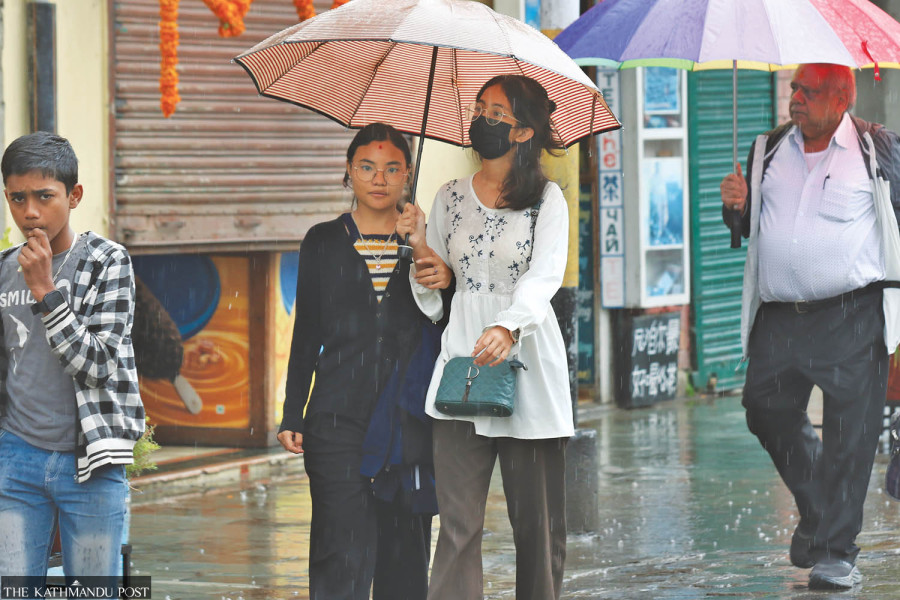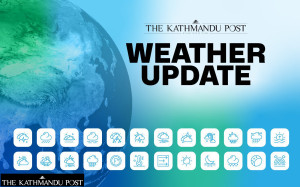Weather
Unseasonal rain brings cold, clears dust pollution
The Meteorological Forecasting Division says light to moderate rainfall is expected in most of the hilly and mountainous regions on Tuesday as well.
Post Report
Light to moderate rainfall that occurred briefly on Sunday and again on Monday brought a chill to the Kathmandu Valley and several parts of the country.
The Meteorological Forecasting Division under the Department of Hydrology and Meteorology said light to moderate rainfall is expected on Tuesday as well in most of the hilly and mountainous regions.
“Light to moderate rainfall has occurred in hilly and mountainous areas of Koshi, Bagmati, Gandaki Provinces and some places of Karnali and Sudurpaschim Provinces have also witnessed rainfall on Monday,” said Pratibha Manandhar, a senior meteorologist at the Meteorological Forecasting Division. “Some places of Tarai region of Lumbini Province also witnessed rainfall. Temperature will decline further in the coming days as rainfall will bring chilly weather.”
The Met Office attributes the rainfall and weather disturbances to westerly winds, local weather systems and effects of low pressure areas formed around West Bengal of India.
There are chances of light snowfall in a few places of the high hilly and mountainous region of the country on Sunday night, according to the Met Office. Hilly areas of the country will witness general to partly cloudy conditions and the rest of the places will witness partial cloudy conditions.
“We will see sunlight on Wednesday,” said Manandhar. “Weather will improve Wednesday onwards.”
According to met Office, Kathmandu Valley recorded 6.1 mm rainfall in 4 hours on Monday. Minimum temperature of the Valley recorded 16.2 degree Celsius.

Many people including office goers were soaked and those returning to Kathmandu Valley and in other destinations across the country after celebrating Tihar were affected due to disturbances in domestic flights. Farmers preparing to harvest rice, millet and other crops have also been affected due to rain.
Meanwhile the rainfall has helped reduce air pollution in many places including the capital city, which had worsened of late.
Nepal is one of the world’s most vulnerable countries to the climate crisis and has witnessed extreme weather events over the past decade and a half.
Evidence suggests that Nepal's maximum temperature is rising at a greater rate (0.056 degrees Celsius per year) than the global average of 0.03 degrees Celsius per year.
Experts say extreme weather events—excess rainfall in a short period, continuous rains for several days after the monsoon, dry spells, droughts, below-average precipitation, and above-normal winter temperatures—have become more frequent in Nepal.
Evidence suggests that maximum temperatures in Nepal are rising faster, at 0.056 degrees Celsius a year, compared to the annual global average rise of 0.03 degrees Celsius.




 20.12°C Kathmandu
20.12°C Kathmandu





